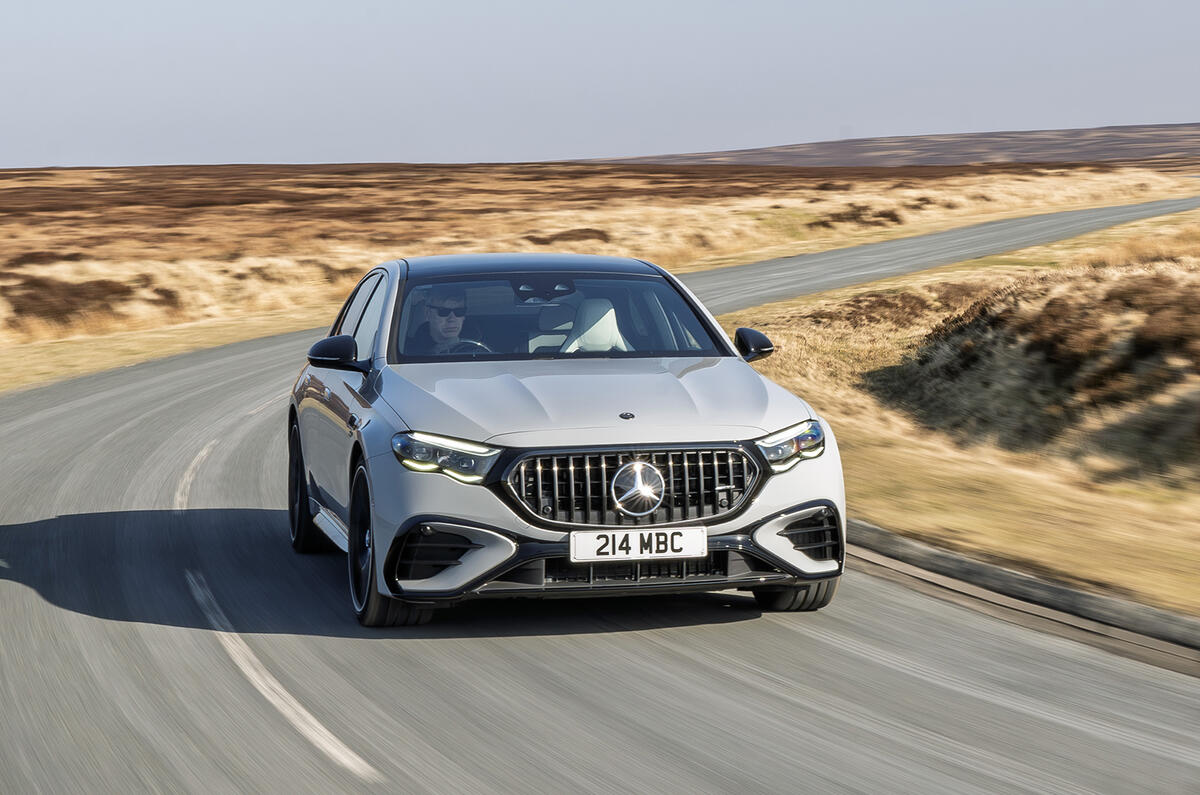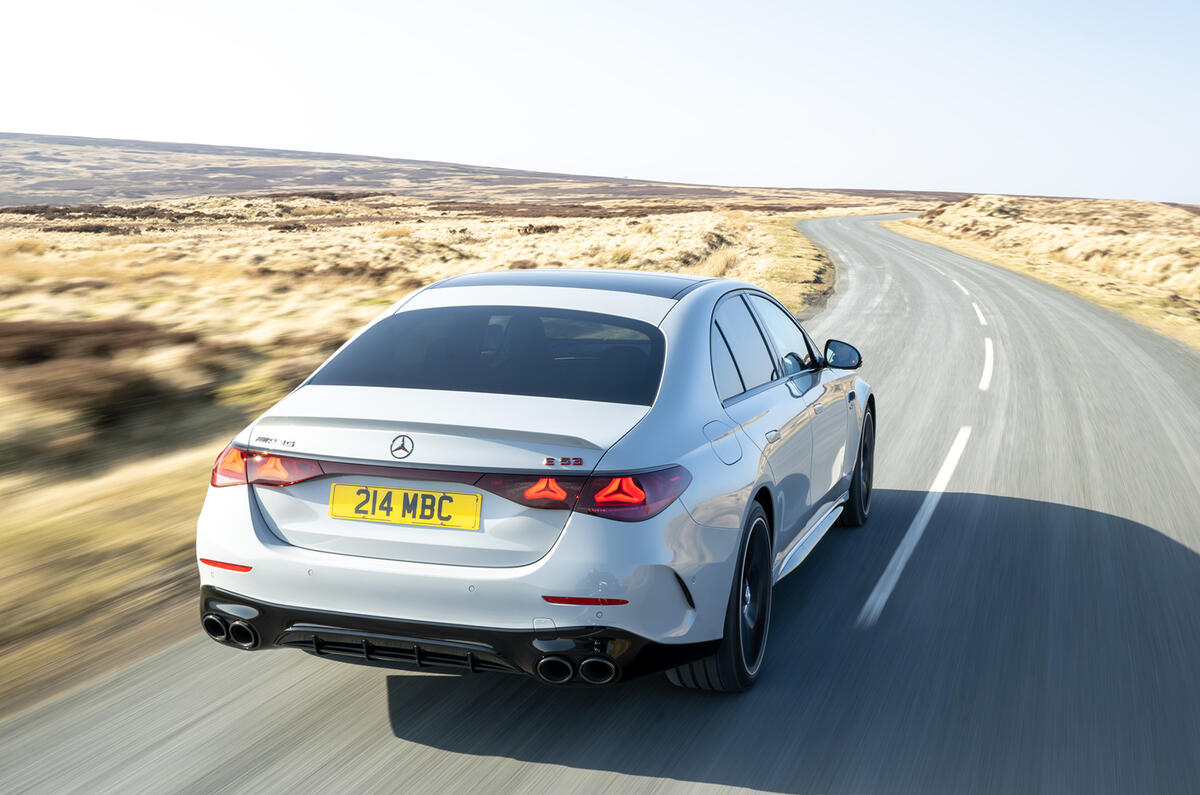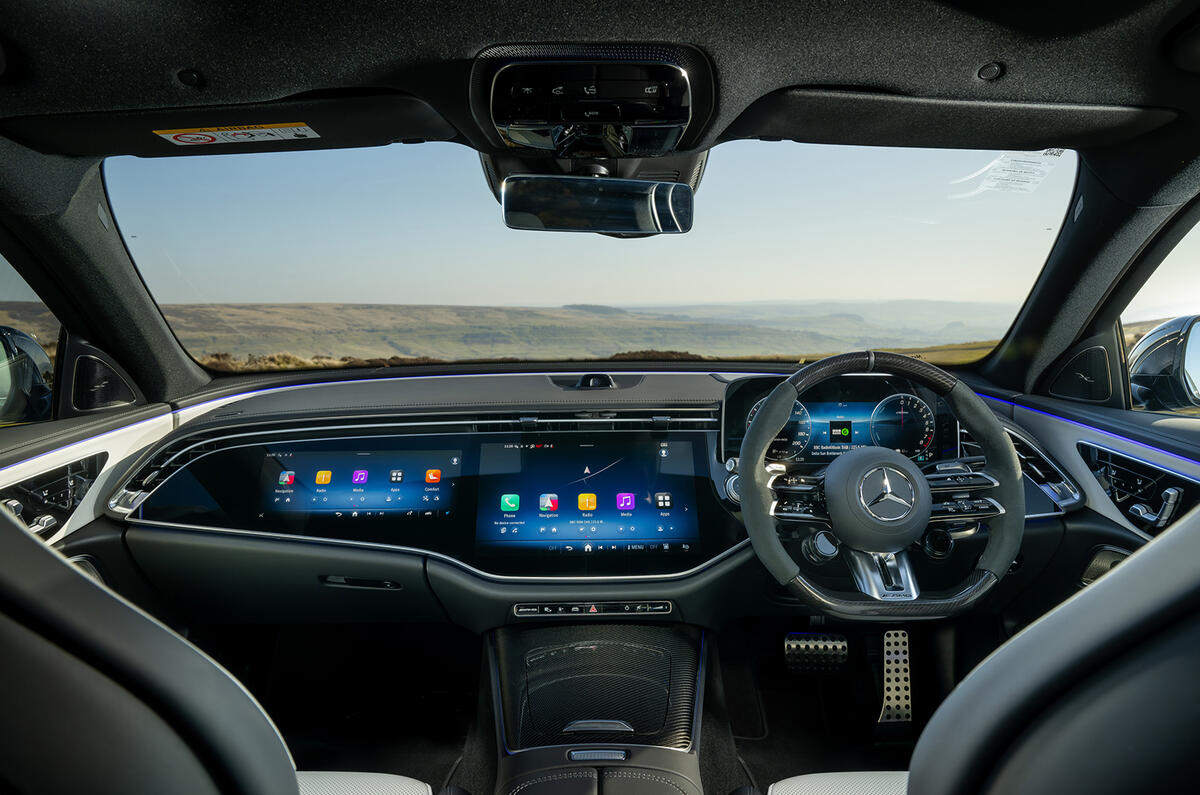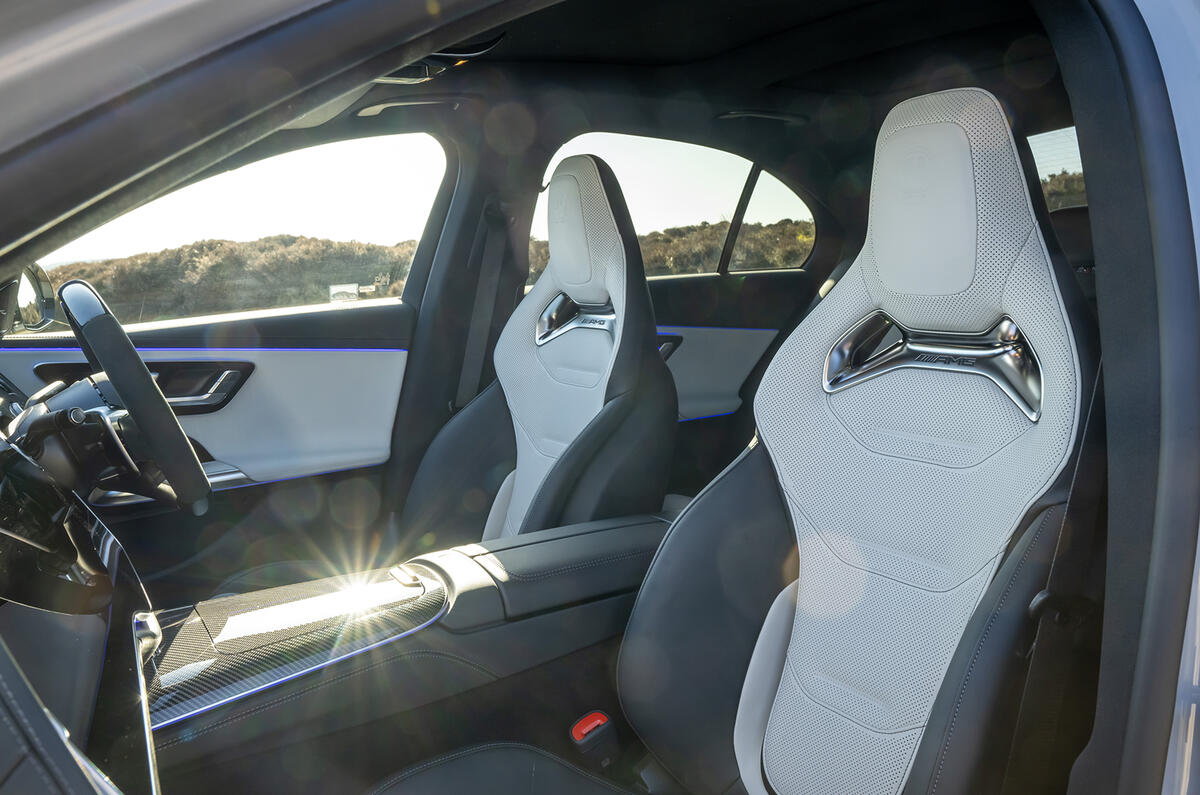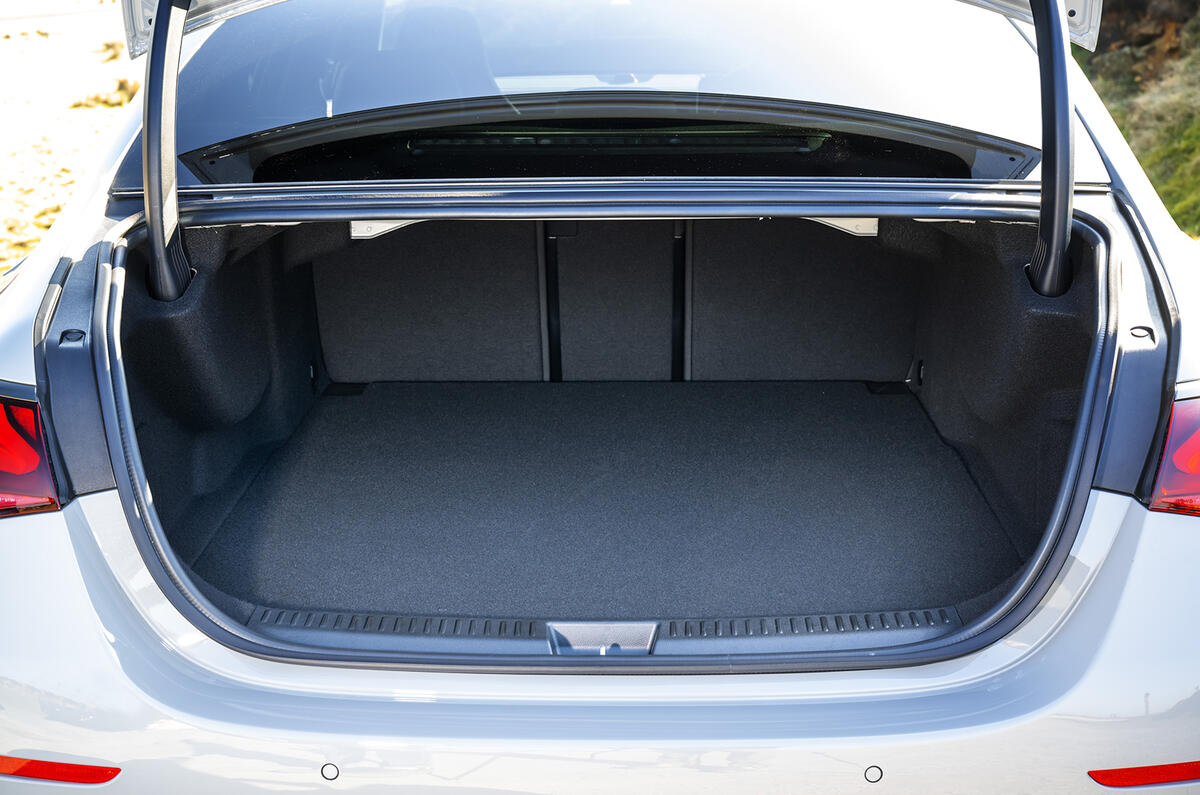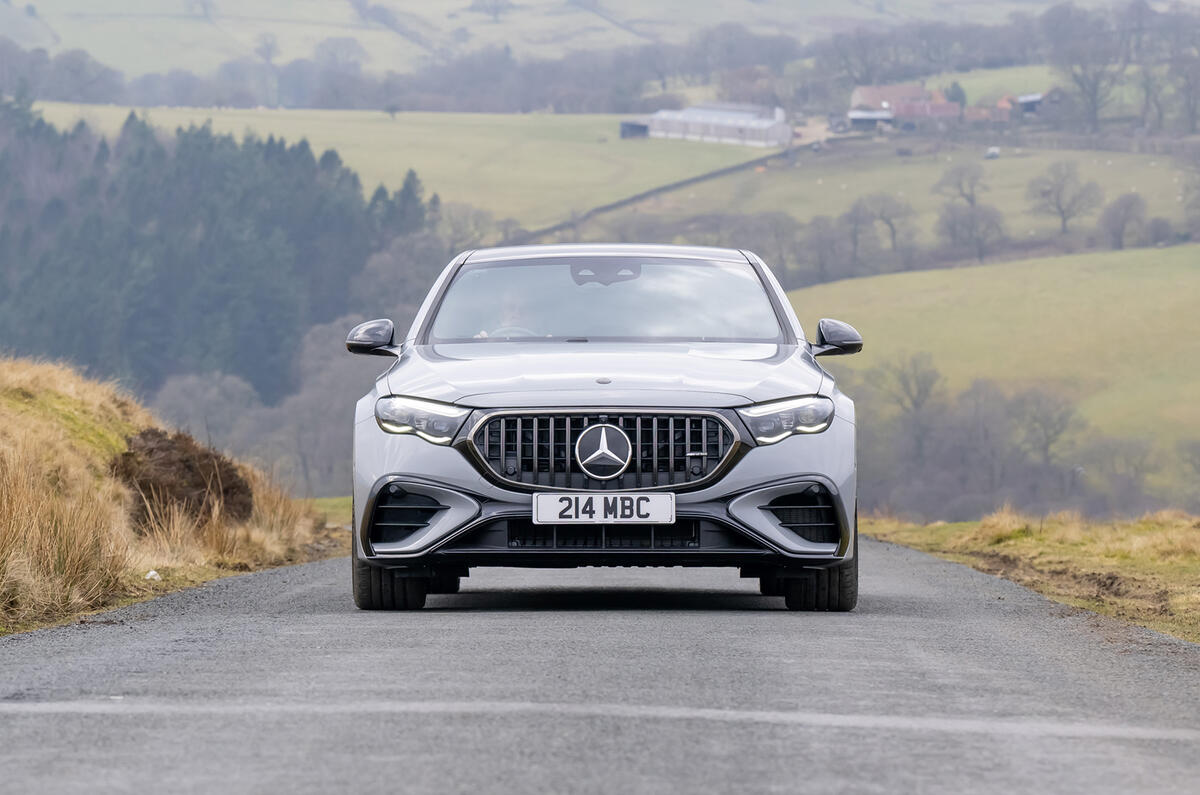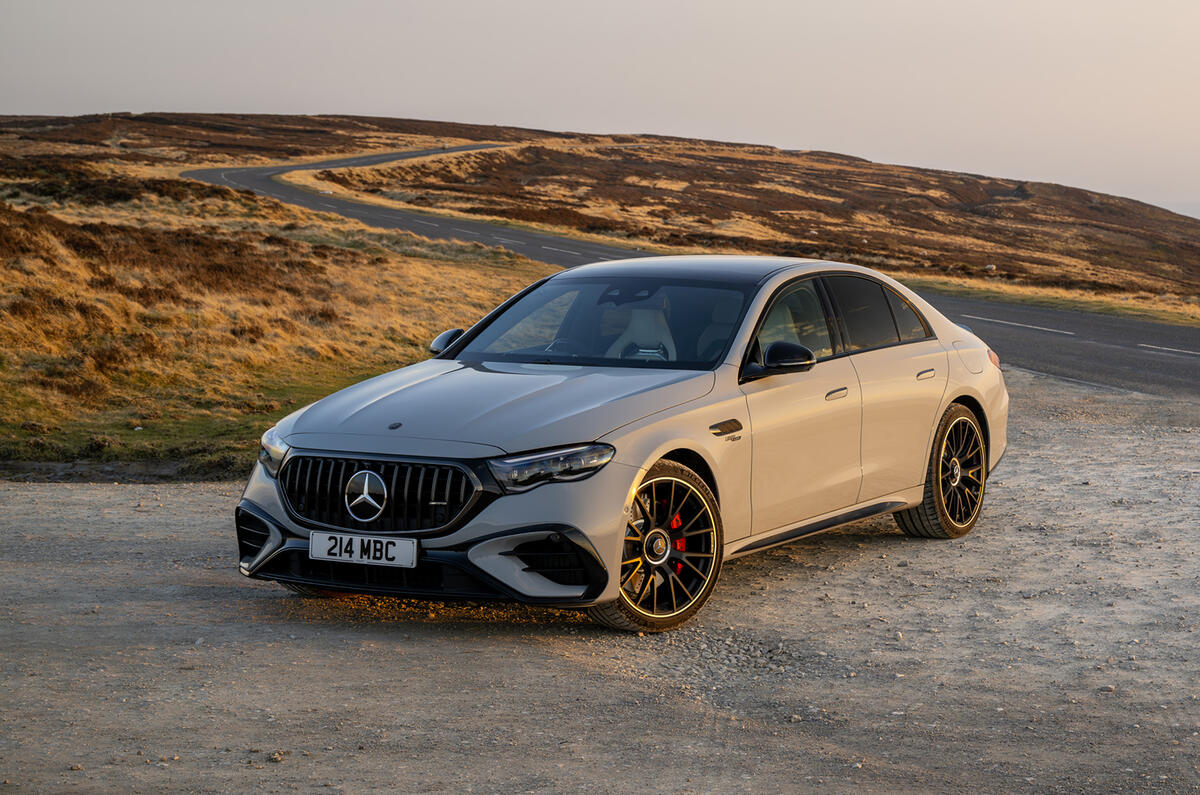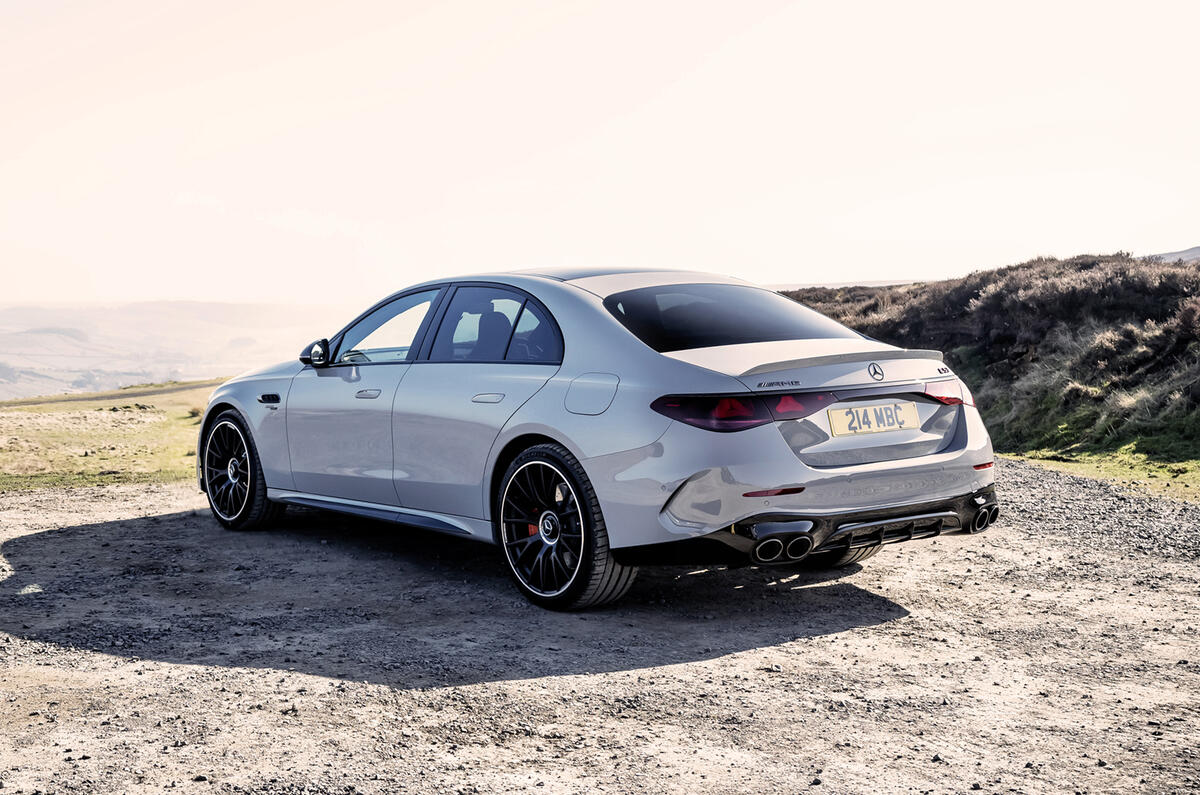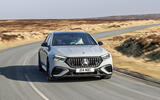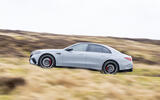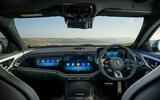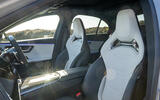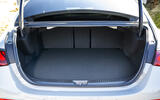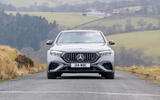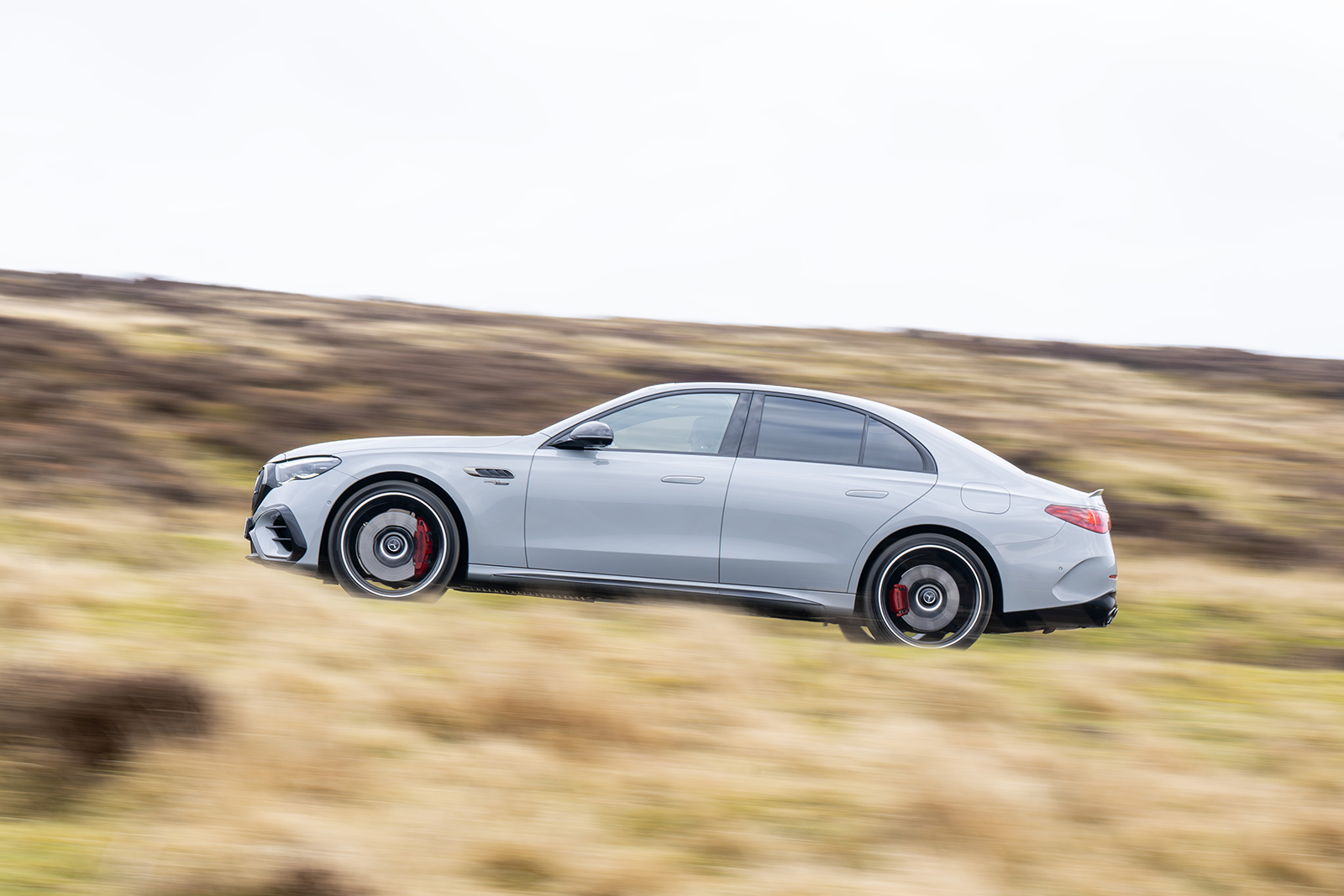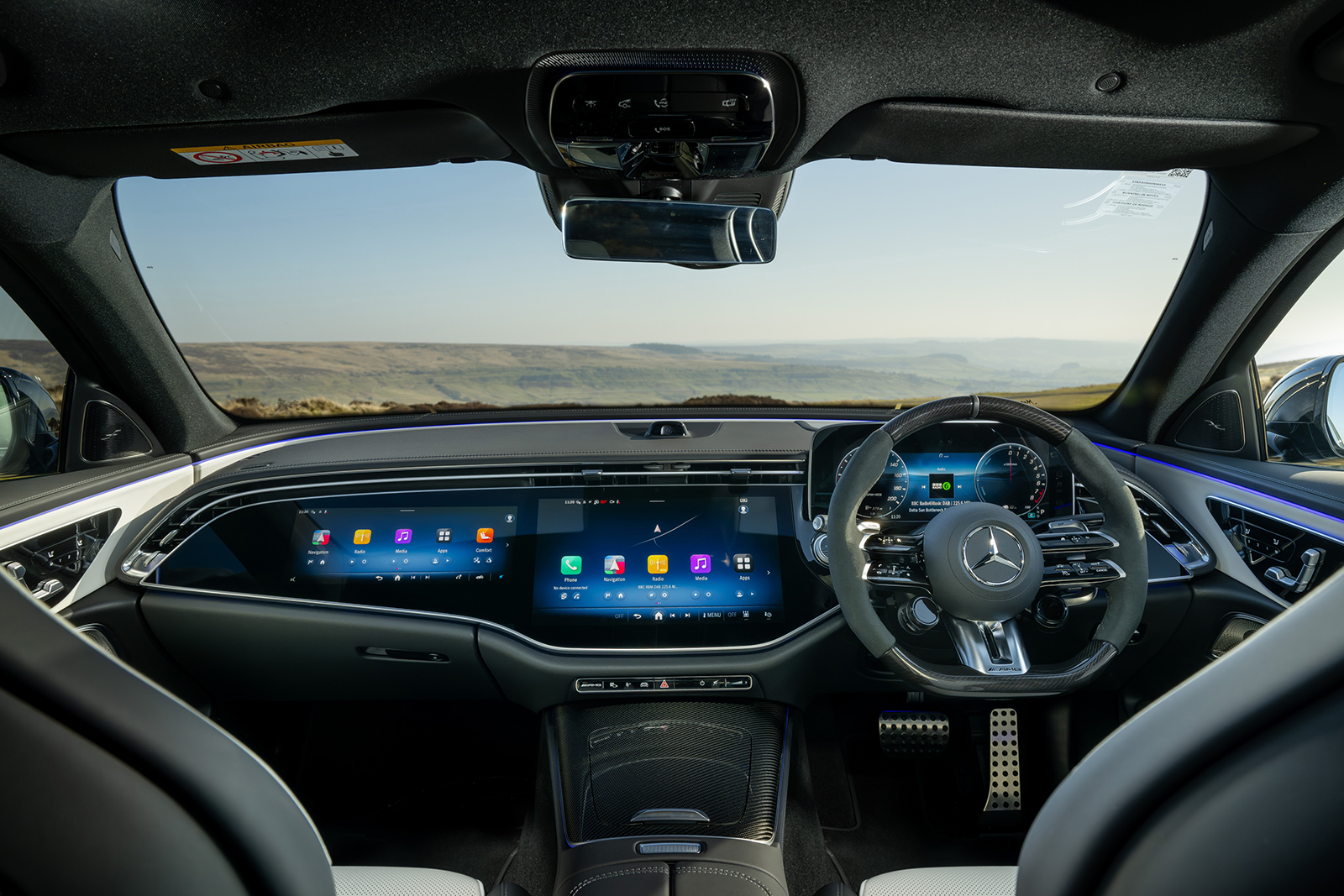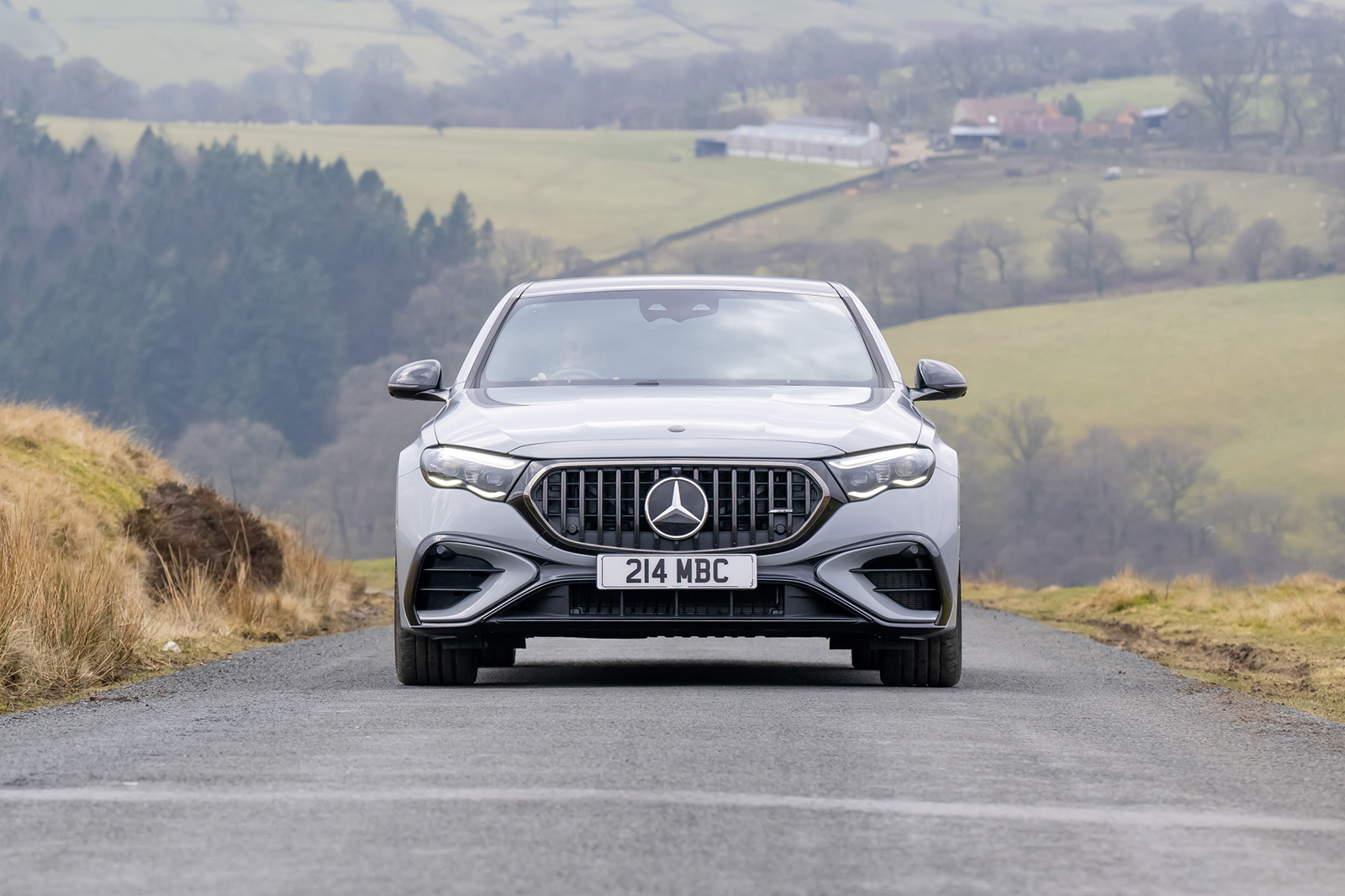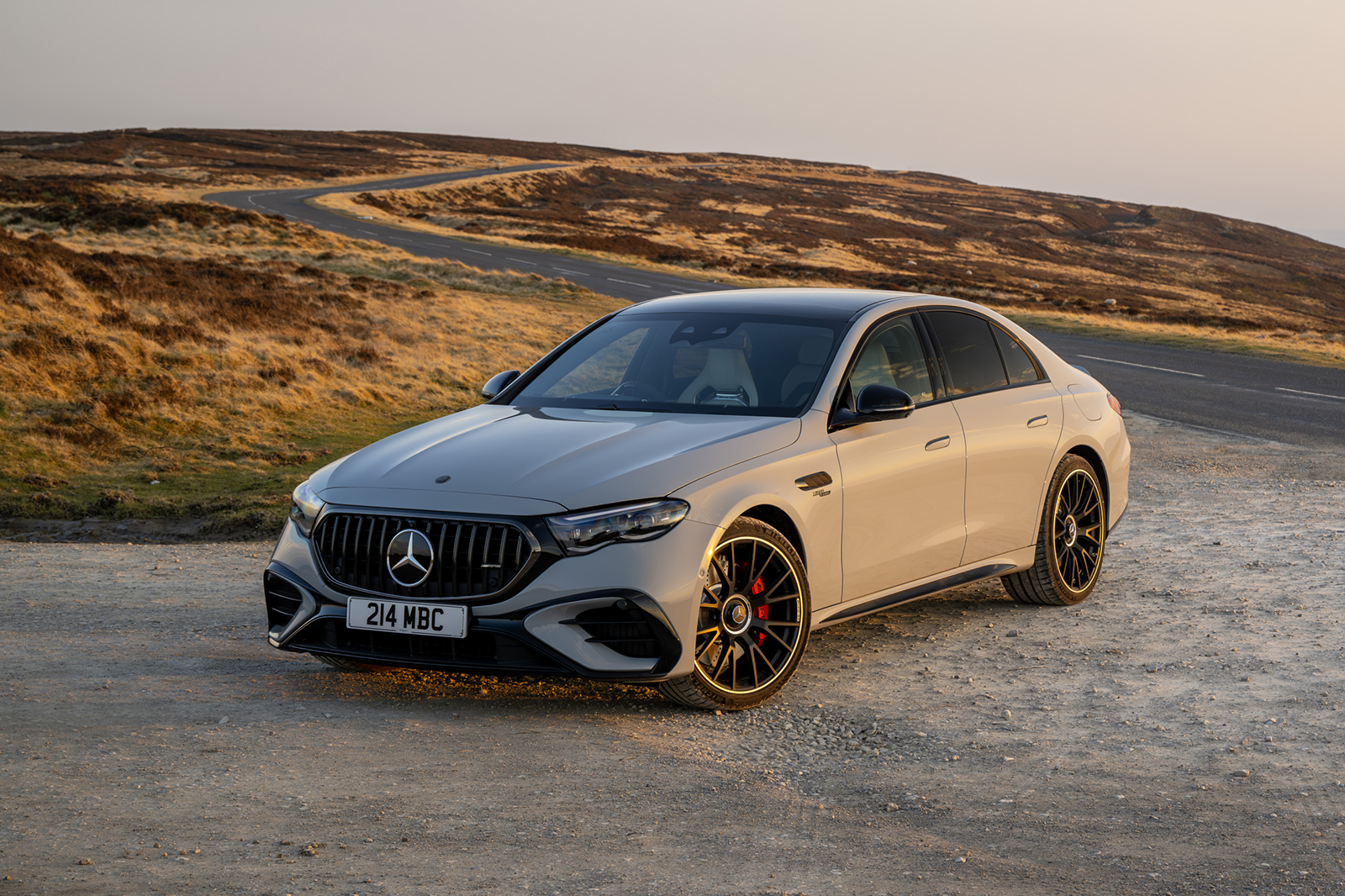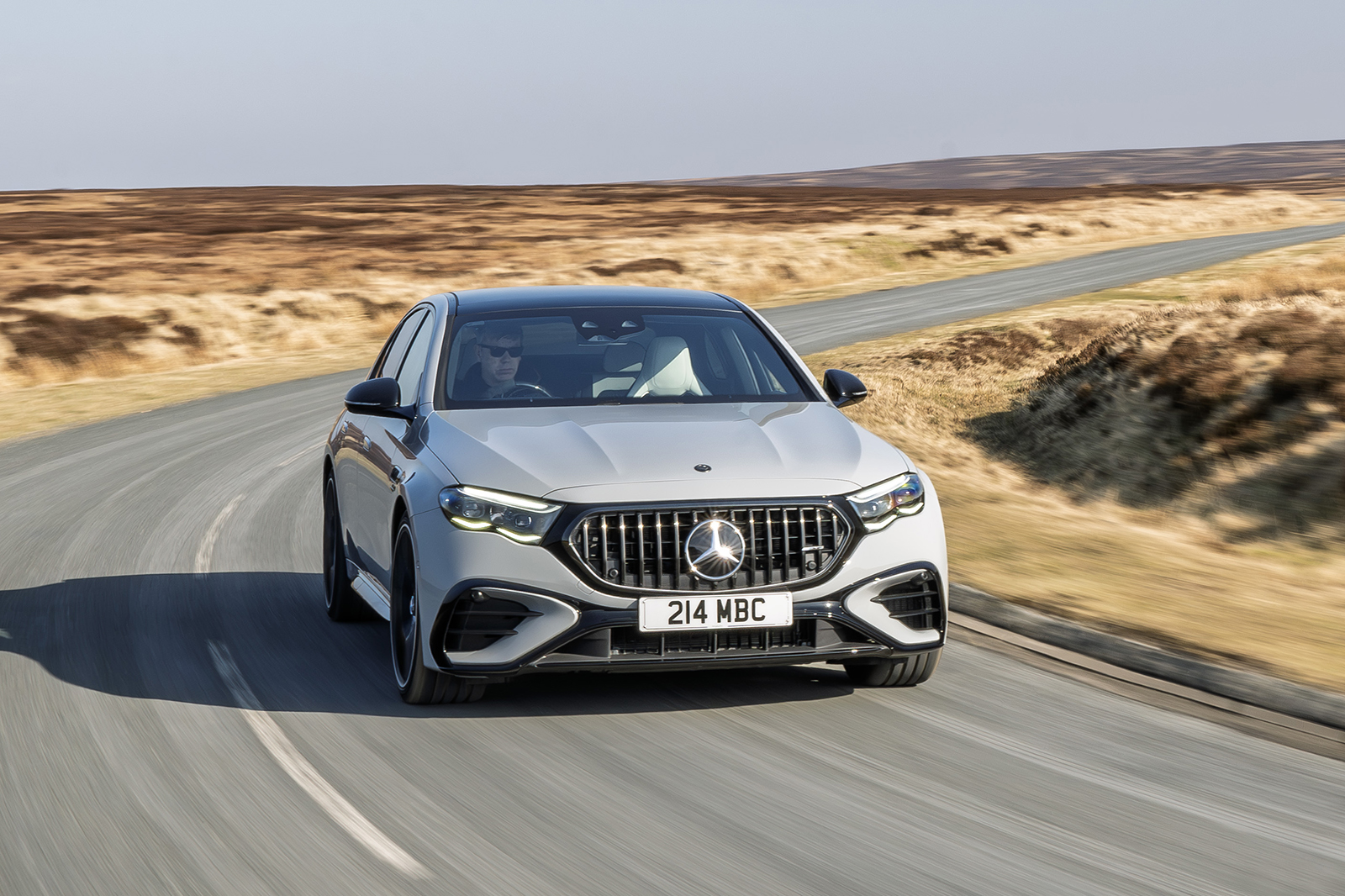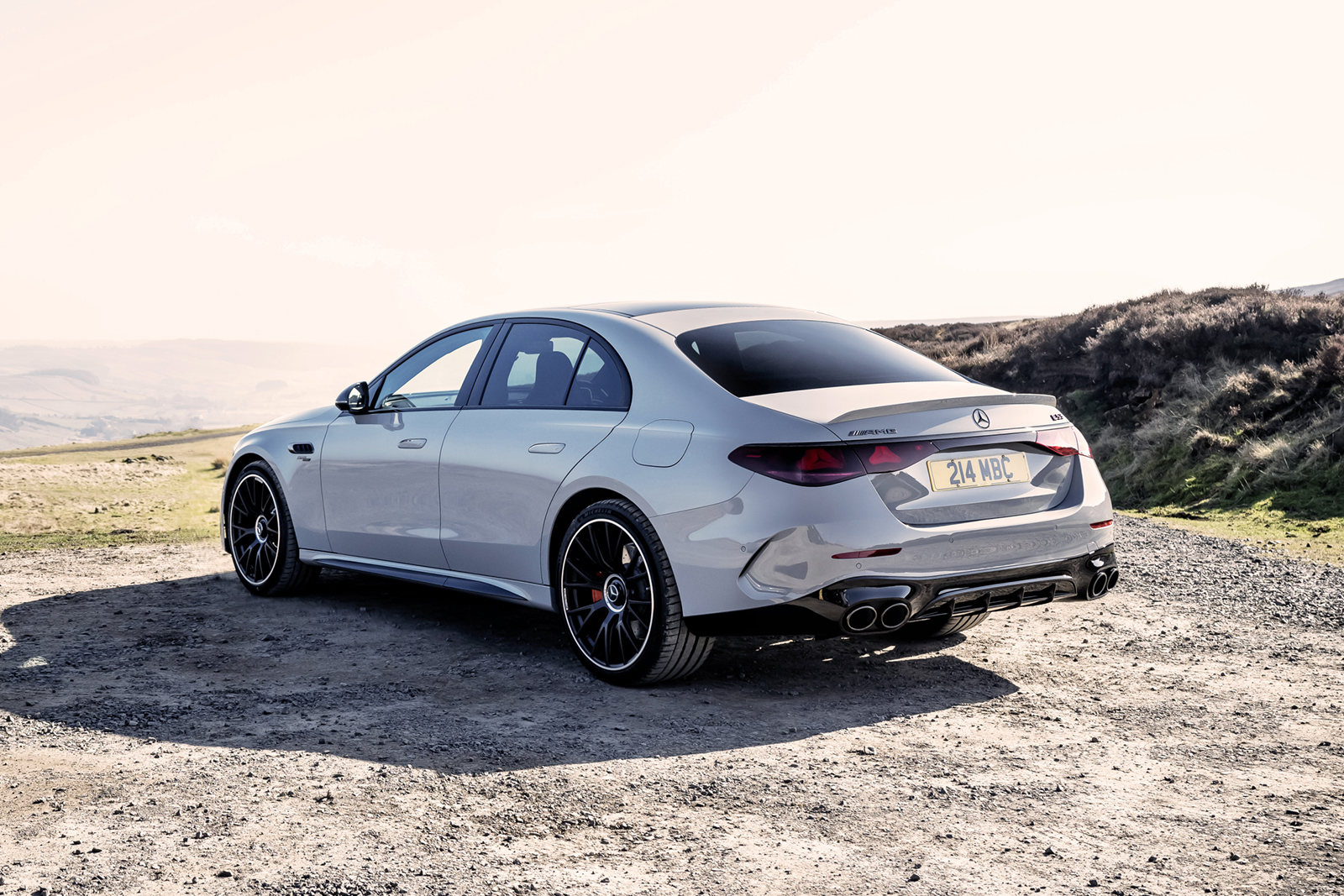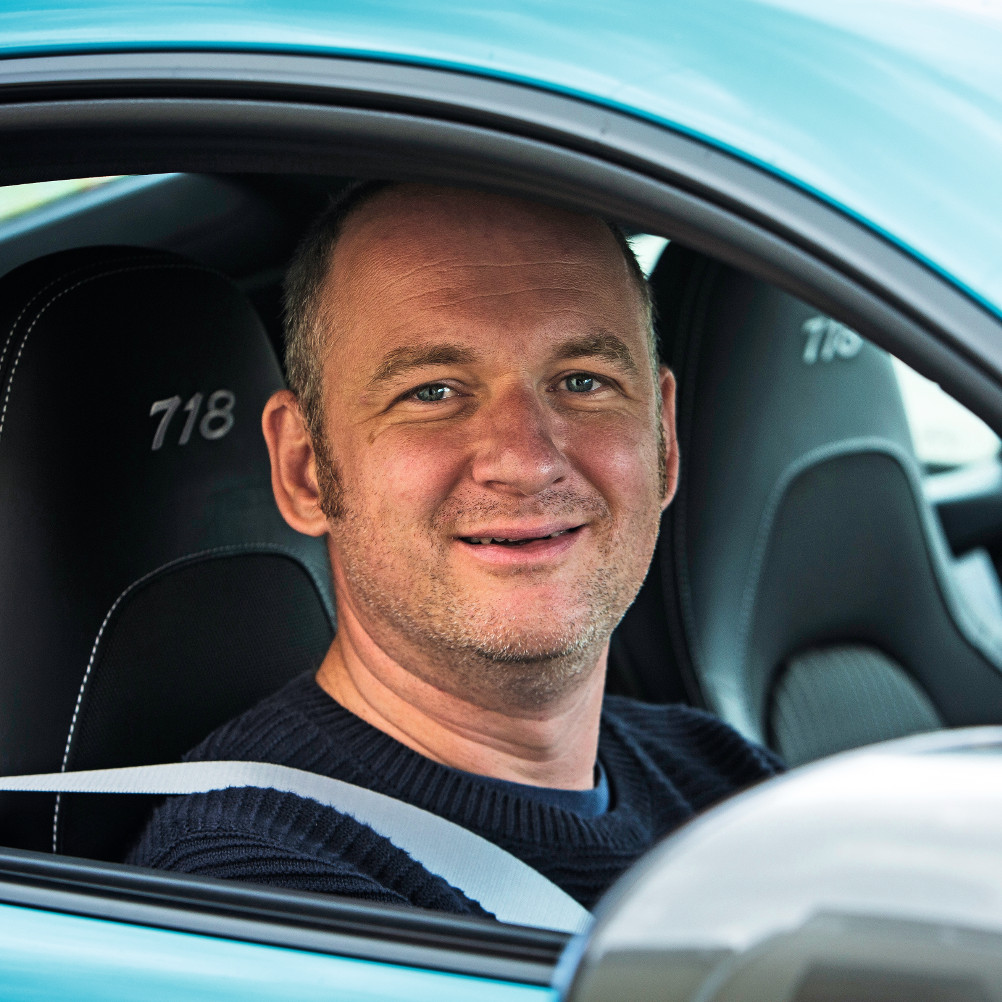The E53’s power comes courtesy of a new PHEV drivetrain centred around the turbocharged 3.0-litre petrol engine used by the first-generation E53, launched back in 2016, which also finds work in the Mercedes-AMG CLE 53 coupé and cabriolet models.
With a larger turbocharger, dynamic engine mounts and greater cooling capacity among other detailed changes, the engine develops an added 13bhp and 30lb ft of torque here, at 443bhp and 413lb ft. It's paired with a synchronous electric motor developing up to 161bhp and 354lb ft, in what AMG refers to internally as a ‘P2’ hybrid system.
With the electric motor mounted within the forward section of the gearbox, the new set-up fundamentally differs from the 'P3' hybrid systems used by AMG's E Performance-badged models (C63, S63, GT 63), which carry their electric motor within the rear axle instead.
Together, the dual power sources provide an overall system output of 577bhp and 553lb ft - considerable 148bhp and 170lb ft increases on the previous-generation E53.
The AMG Dynamic Plus package ramps up the performance further, bringing revised engine software and the extra 26bhp during short bursts of full throttle acceleration in Race Start mode, for an overall 603bhp.
It’s all sent through a nine-speed AMG TCT Speedshift gearbox and a fully variable 4Matic+ four-wheel drive system, with torque vectoring to vary the amount of drive sent to each individual rear wheel.
Altogether there are six driving modes for the car: Individual, Battery Hold, Electric, Comfort, Sport and Sport Plus. The optional Dynamic Plus package provides an additional Race Start mode.
A 21.2kWh (usable) lithium ion battery mounted within the floor of the boot endows the E53 with an electric-only range of between 58 and 63 miles on the combined WLTP test cycle, allowing it to do extended distances without reliance on the petrol engine.
Charging can be achieved at up to 60kW on a DC system for a fast top-up of electricity or alternatively at a more leisurely 11kW on an AC system.
Reflecting its performance-orientated standing, the E53 adopts a more aggressive appearance than other E-Class models. Included among its unique styling elements are larger cooling ducts within the lower section of a new-look front bumper, an AMG-specific front grille with standard illumination and front wings widened by 11mm either side to accommodate the wider track.
Further back, the E53 receives model-specific sills with black highlights underneath the doors, a boot-deck spoiler and a new rear bumper that houses a diffuser and four round tailpipes.




